THE COLOR LESSON
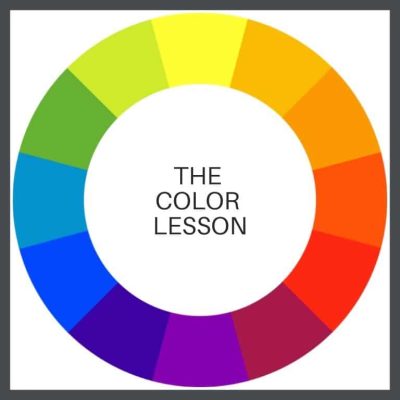 This is a lesson in choosing the right bungalow paint colors, which can be a huge challenge. Most articles give you a few examples, & the paint manufactureres provide pitifully few Arts & Crafts combinations, but they don’t actually teach you anything about the design history of bungalows or about the use of color to best enhance your home. If you want to learn the how & the why of color choices, stick around & read my series of articles, & then you’ll be able to figure it out for yourself & have a custom color scheme, based on your favorite colors, that you will love.
This is a lesson in choosing the right bungalow paint colors, which can be a huge challenge. Most articles give you a few examples, & the paint manufactureres provide pitifully few Arts & Crafts combinations, but they don’t actually teach you anything about the design history of bungalows or about the use of color to best enhance your home. If you want to learn the how & the why of color choices, stick around & read my series of articles, & then you’ll be able to figure it out for yourself & have a custom color scheme, based on your favorite colors, that you will love.
Read in the order they are presented. Each one builds upon the ones previous.
I’m going to start the choosing bungalow colors lesson with some basic terms, so basic that some of you may know them, but have patience, gentle readers, some may not. If you run into a term in a definition that you don’t know, look for it on the list. If it’s not there, let me know so that I can add it. In this part, the list is in teaching order, with images, so that the concepts build, one to the next. You can use this as a glossary in the next articles that will cover more complex colors, explain the Arts & Crafts palette & the final one of choosing colors for your own bungalow.
choosing bungalow colors lesson
CHOOSING BUNGALOW COLORS- THE BUILDING BLOCKS LESSON
Color
A quality of an object which is caused due to the light being reflected by this object.
Color wheel
A tool that shows every color in the full range of colors, by gradients.
Hue
A true color with no white, grey or black added.
Primary Colors
The building blocks of color- red, yellow, blue. These colors & are cheerful & great for kids’ toys.
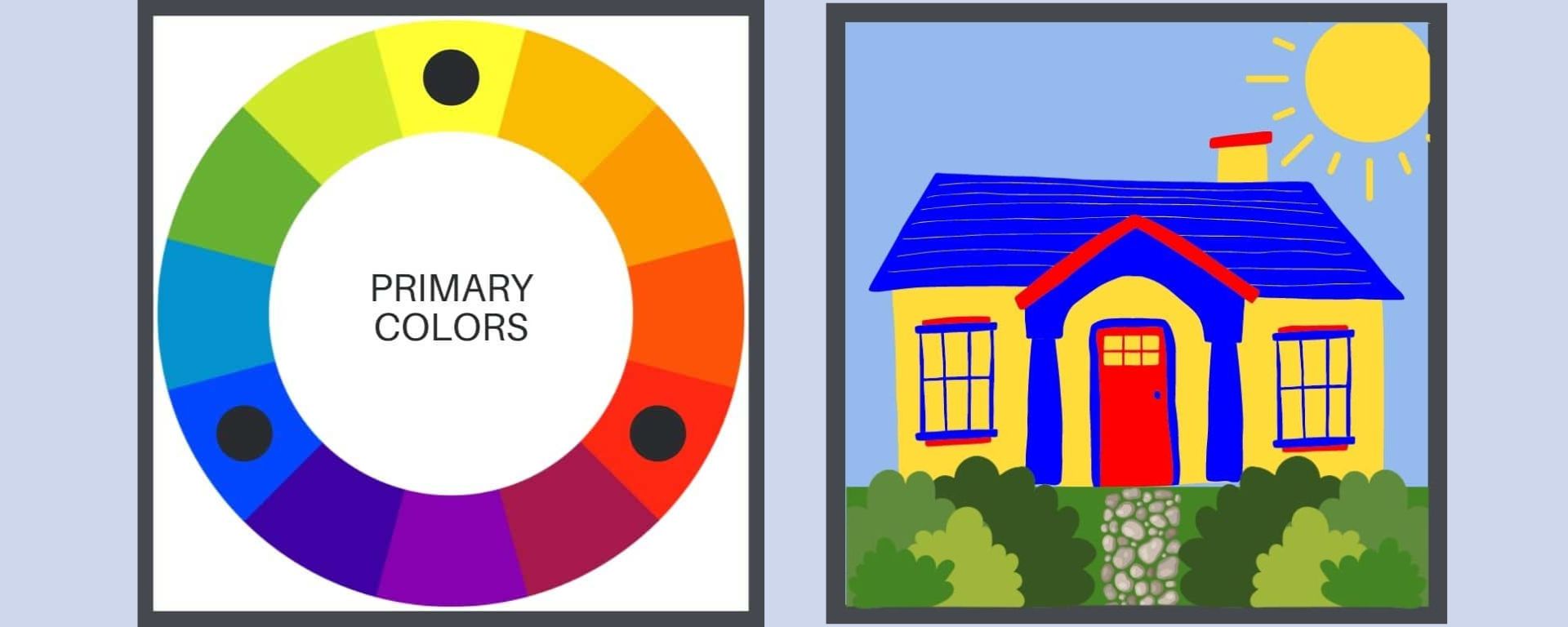
Secondary Colors
Combining 2 primary colors in equal amounts gives you green, orange, violet. I’m actually not sure where this combination would work!
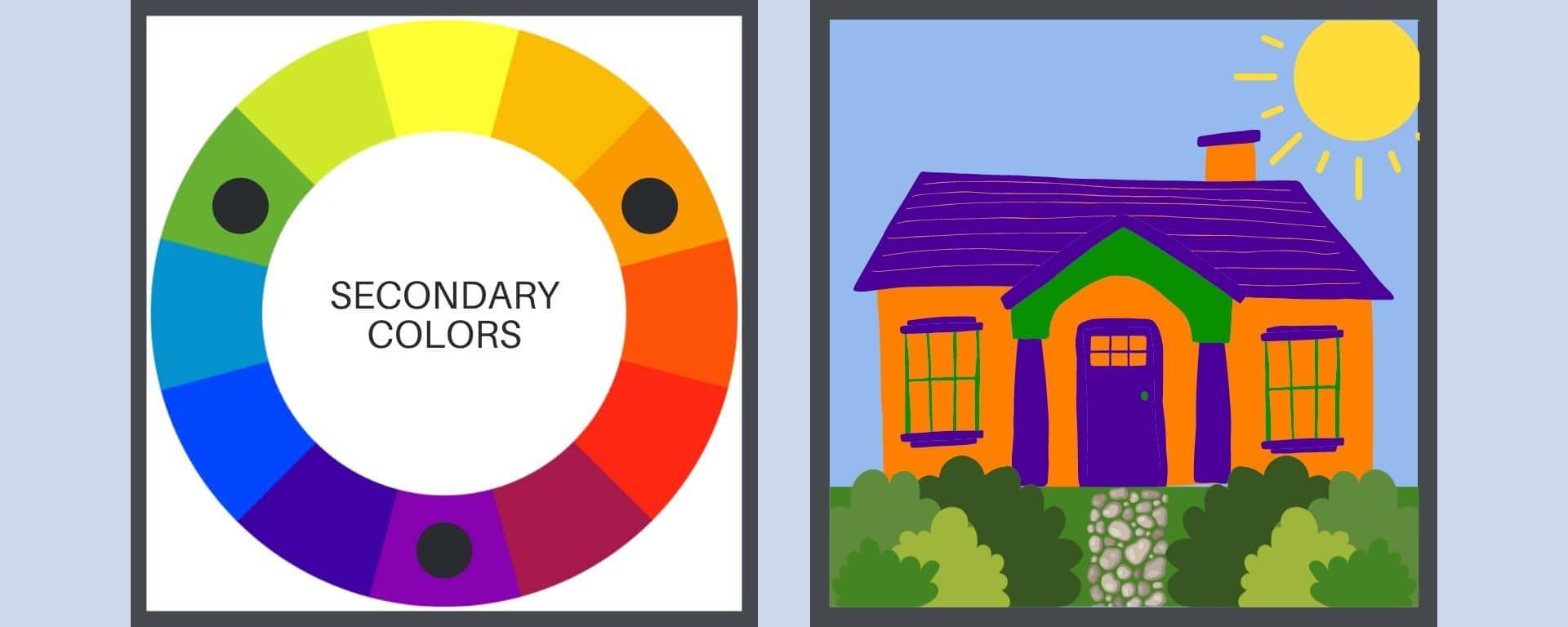
Tertiary Colors
Combining different amounts of the 2 primary colors- gives you red-orange, red-violet, yellow-orange, yellow-green, blue-violet, blue-green. I love this combination of hippy colors!
Remember that at the turn of the last century, they were still using natural materials as tints, so these plastic colors would not have even been possible to create. I’m thinking, let’s keep going so we don’t embarrass this poor house!!!
You can mix tertiary colors to achieve different colors. The closer that different colors are on the color wheel, the more compatible they are, and the more intense the resulting color will be when the colors are mixed. The further they are, the more muted & less intense they will be.
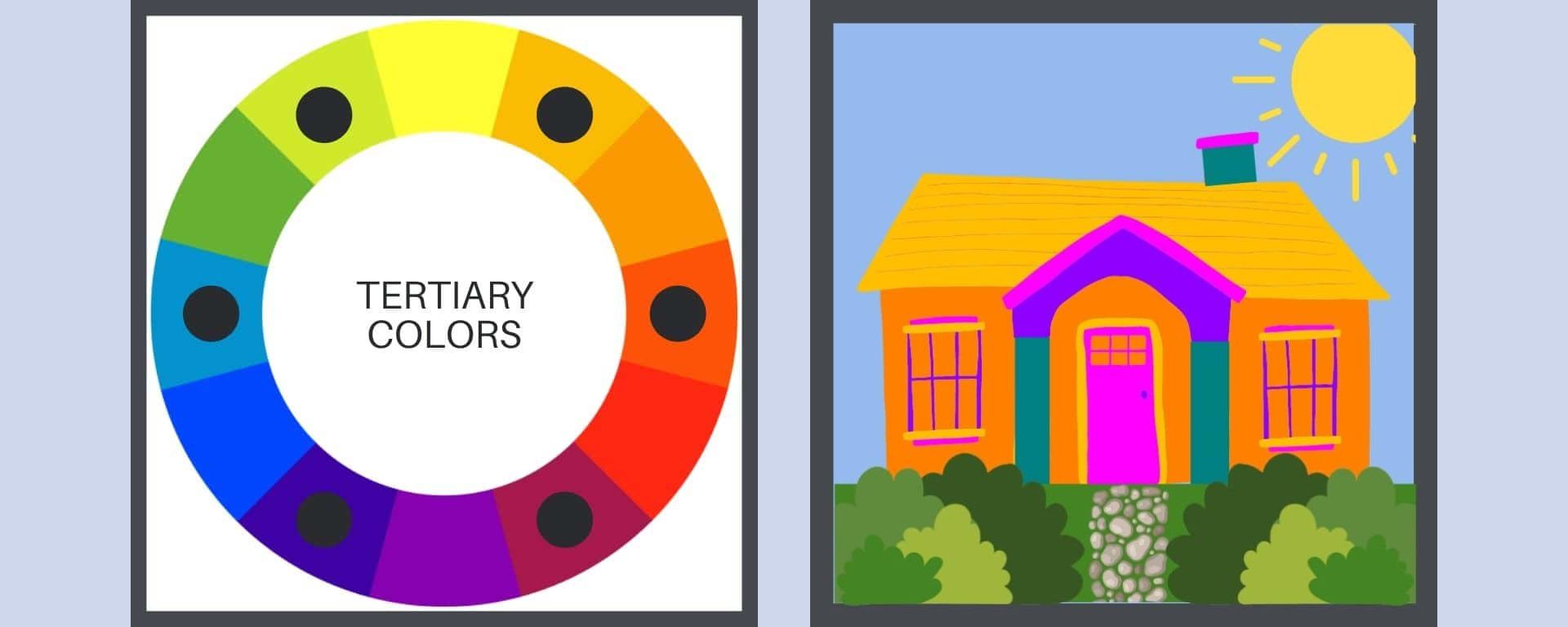
CHOOSING BUNGALOW COLORS-THE COLOR GROUPS LESSON
Cool/Water Colors
Do not include any red. Cool colors do include green, blue, & purple, & variations of those three colors. Blue is the only primary color within the cool spectrum. Greens take on some of the attributes of yellow, & purple takes on some of the attributes of red. As pastels, they can be more subdued than warm colors, but can be more vivid in the jewel tones.
Cool colors tend to be soothing & calming, like a trickling brook.
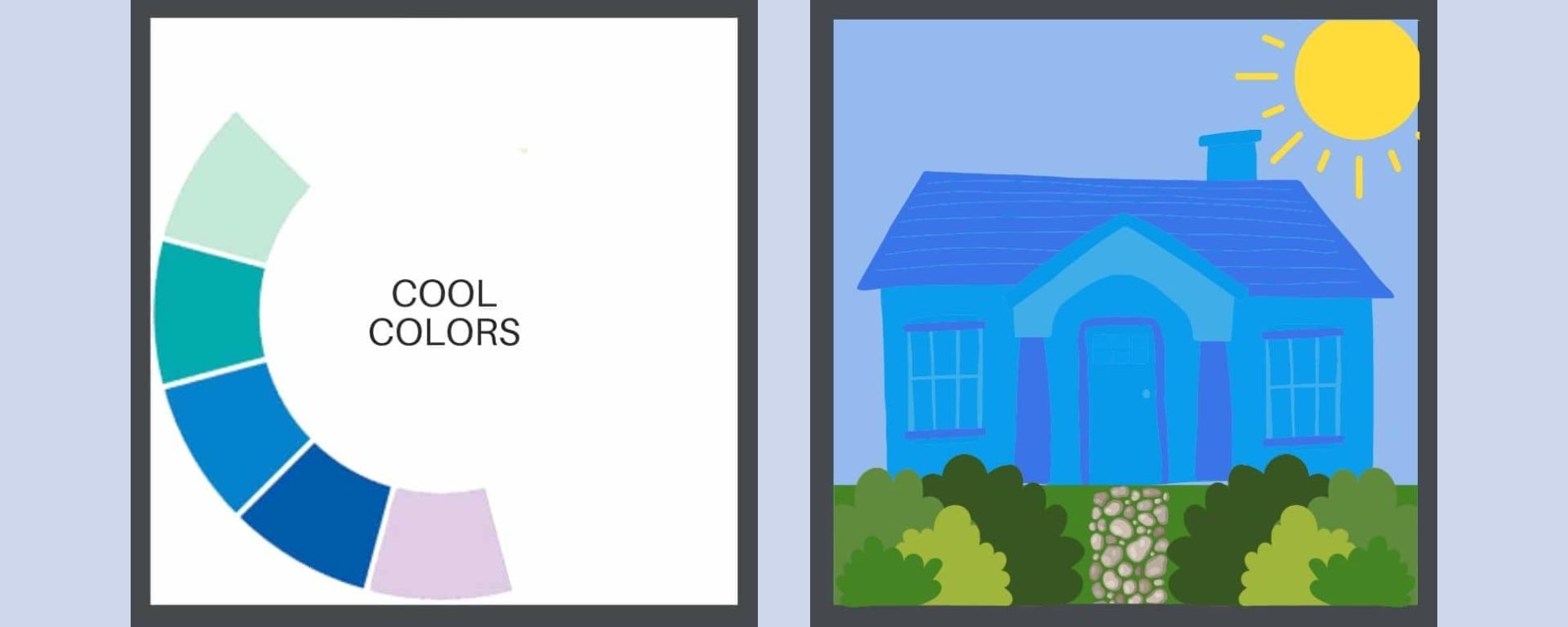
Warm/Fire Colors
Do not include any blue. Warm colors are of orange, red, yellow, & combinations of these. They tend to make you think of warm things, such as sunlight, fire, heat & friendliness.
Visually, warm colors look as though they come closer, or advance which is why they’re often used to make large rooms feel smaller & cozier. I think that this example may raise my blood pressure a little.
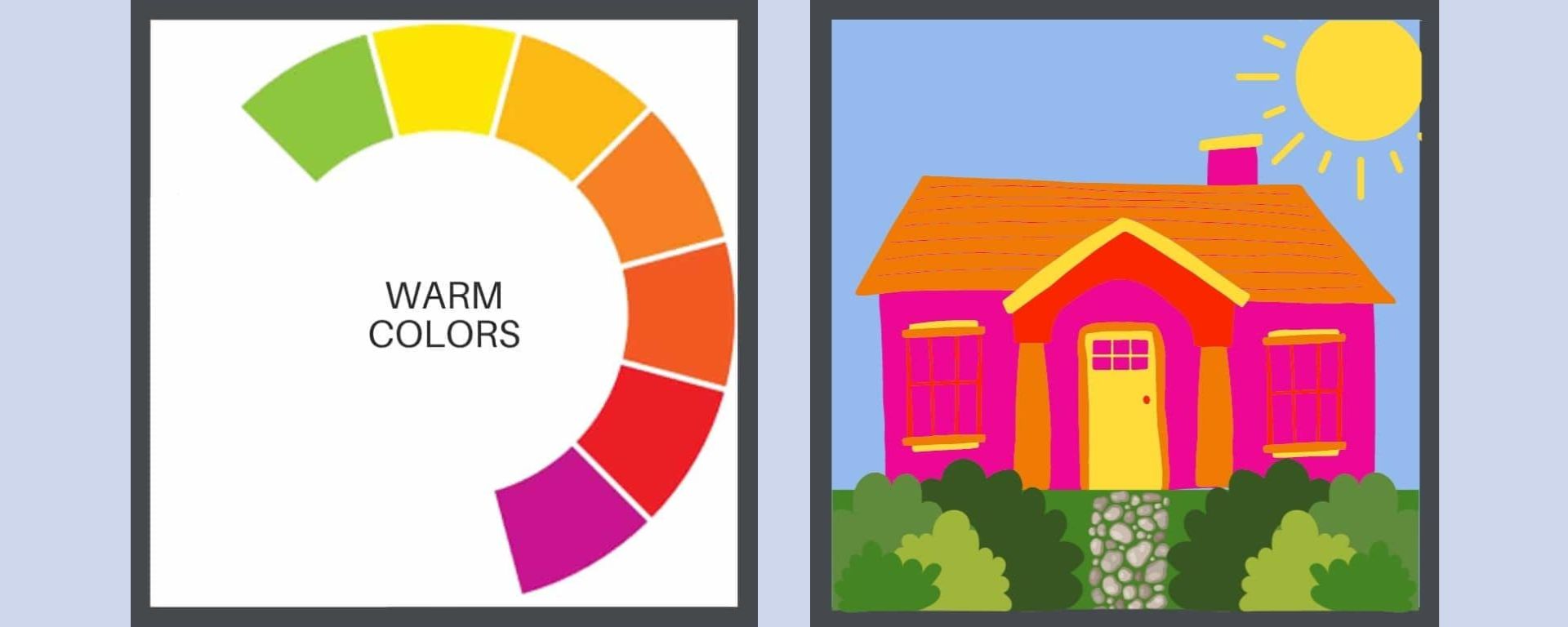
Pastels
These are colors which have white added to them. They can be primary, secondary or tertiary. Happy Easter!
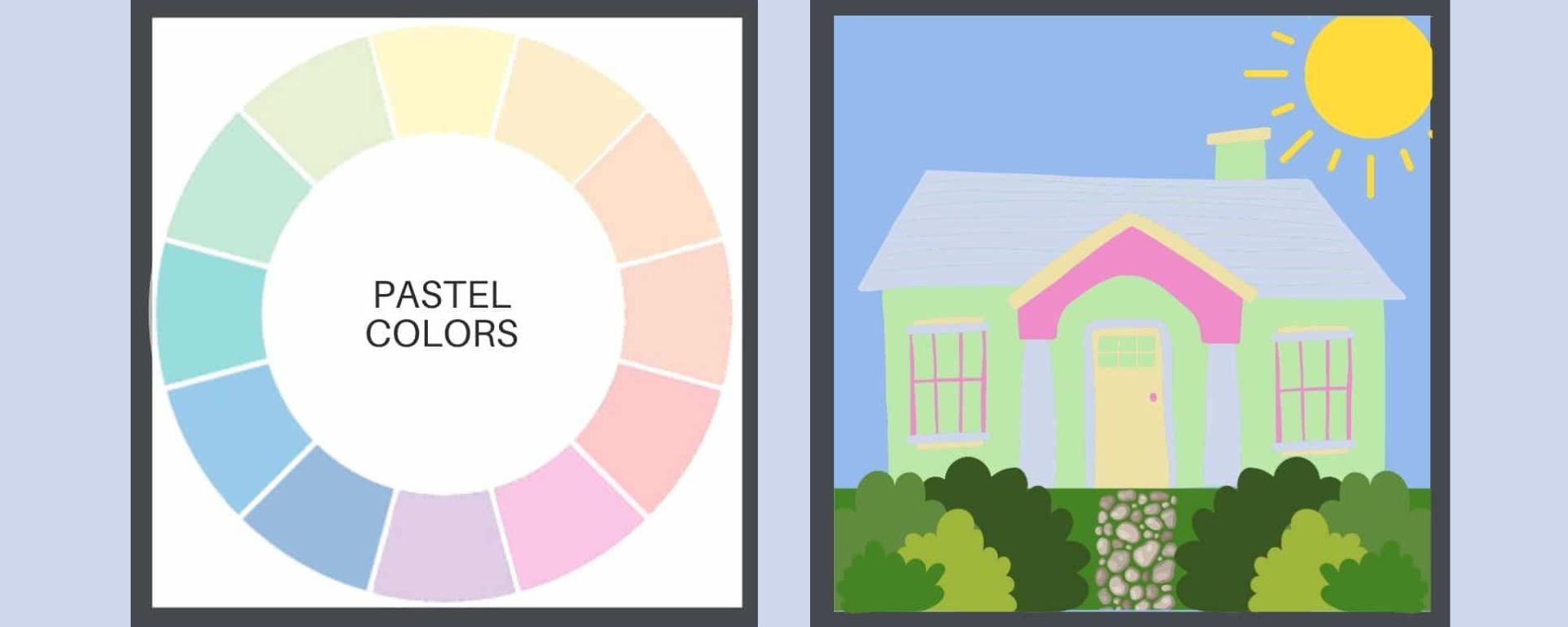
Jewel Tones
Any deep or vivid color suggestive of that of a gemstone; ruby, emerald, sapphire, amethyst, etc. I have actually seen bungalows painted in these wild colors. I live in Florida & I don’t mind them on a Key West style house. .
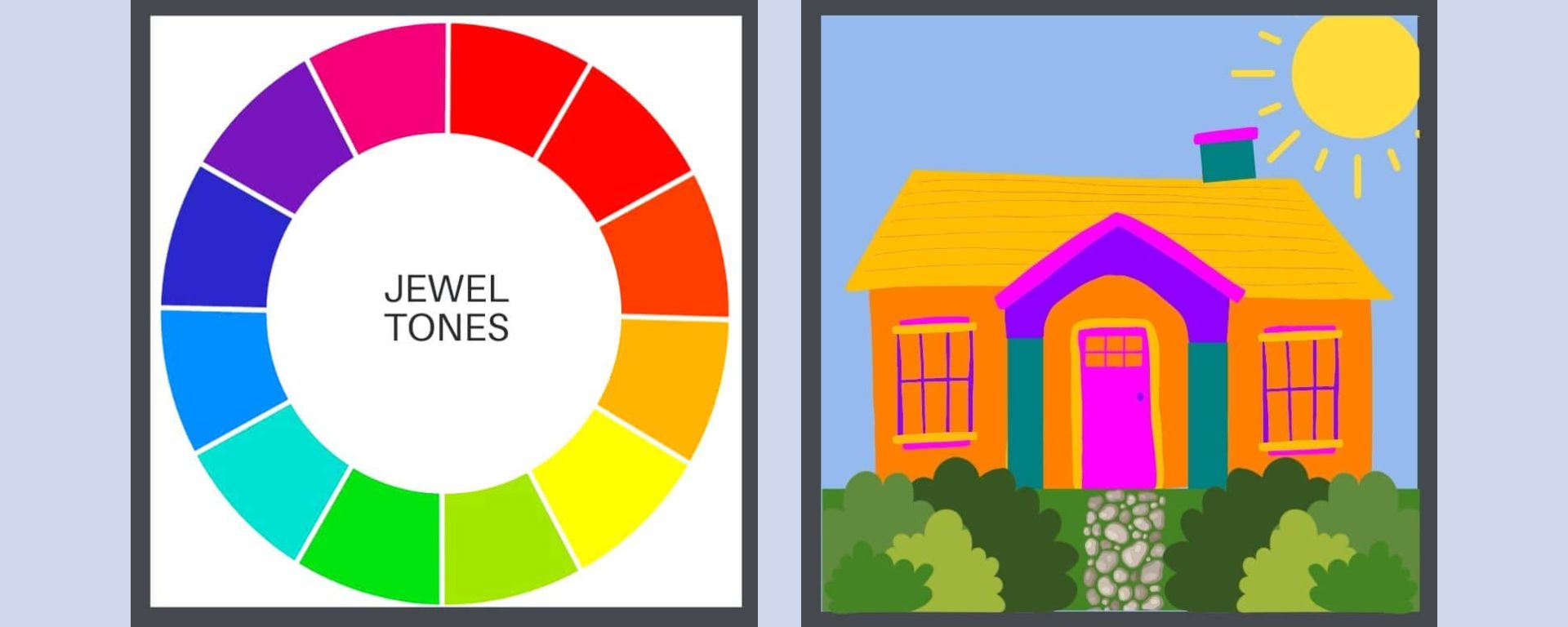
Earth Tones
A group of colors that contain brown, the color of earth or soil. In its larger sense, (& how it will be used here) is colors that are found in nature- soil, grass, trees, berries, flowers, the sky, clouds, the sun. Though we’re not there yet, I find these colors pleasing & the house looks like it’s on friendly terms with the bushes. Well, not these bushes. They’re too bright. Use more subtle plantings, please.
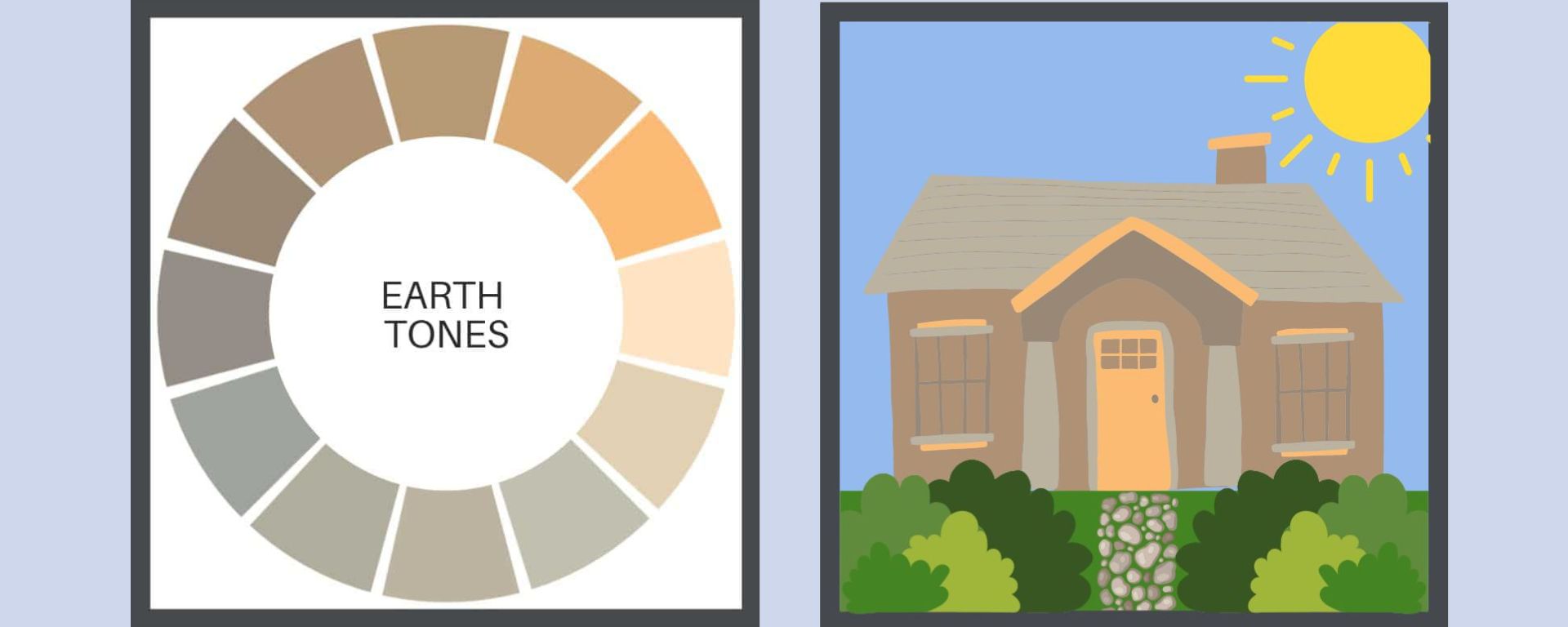
Neutral Colors
Colors that are not found on the color wheel such as gray, beige and brown. Neutral colors are muted shades that appear to lack color but often have underlying hues that change with different lighting. The lighter ones can reflect the colors around them. Though not on the color wheel, they complement primary and secondary colors.
Neutral colors can be complex in tone, as mixing different colors creates unique shades. For example, greige is a mix of light gray and beige, with yellow hues in natural light and gray in fluorescent lighting. (Natural light refers to lighting generated from a natural source like the sun.)
I do not mind an all-neutral palette for a bungalow, but landscaping must be planned to liven it up a little, without overwhelming, & make it look more an extension of nature.
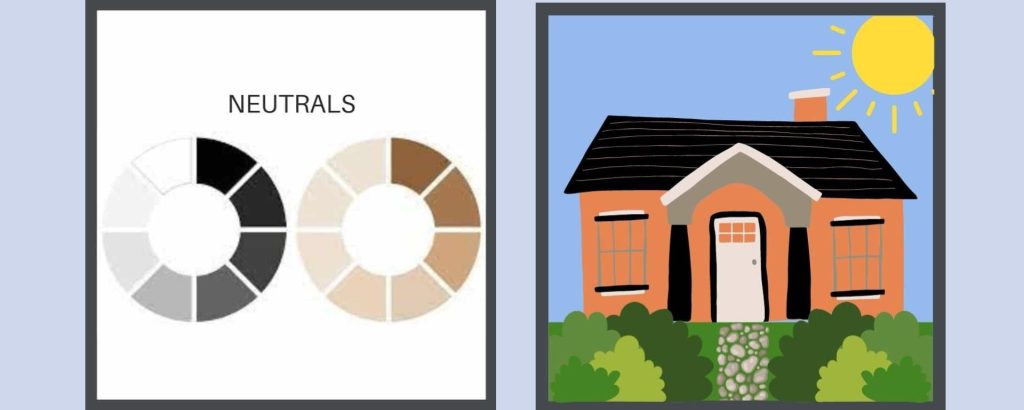
A key issue in color is paint quality.I always recommend Ben Moore because their paints are easy to apply & long lasting. Their colors are well formulated so they are clear & vibrant, they have a great website so that you can search & try colors on a photo of your house, & their customer service is some of the finest in the land.
We are getting closer, but there are still more things to consider before we’re fully submerged in the Arts & Crafts palette.
STEP ON OVER TO PART 2 , COLOR HARMONY, HERE.
 STAY IN THE BUNGALOW KNOW!!!
STAY IN THE BUNGALOW KNOW!!!
Sign up for our newsletter & receive our FREE E-book, 7 VITAL Things to Do Before You Hire a Contractor.



I am considering painting my house. It is a 1 1/2 story with some unusual features. I opened this article and thought that it’s much more information than I need. I went back to looking at pictures of bungalows and driving around my neighborhood and even went to a paint store, but didn’t like their suggested palettes. I continued to feel confused. I came back to your articles and read them. The second time through I started feeling like I could do this. My favorite color is purple and I had been feeling like I was going to have to choose colors that I don’t love in order to stay historically accurate. I was very happy to see eggplant suggested. I am going to upload my house images and try some colors today, using eggplant as an accent color.
I am so glad that my articles helped you! The color possibilities are far more extensive than the palettes that are suggested. And everyone wants to use their favorite color! Even employed as an accent, you can build your whole palette around it. I started with a deep burgundy for my Craftsman & expanded from there.
I really enjoyed this lesson! I’ve been painting and sewing and designing with color all of my life, but this article opens a whole new aspect for me!. I really understand now why I instinctively choose the colors I do! I painted my house a specific shade of yellow and then offset it with a specific shade of blue. And now I know why it works. Not exactly Craftsman, but then I don’t have a Craftsman bungalow!
Thank you for your whimsy and your article 🙂
This is what happened to me when I took my first design class at the ripe old age of 65. I grew up in museums looking at perfect created works, so my eye became attuned to beauty, but I didn’t know the why of it. Learning the why expanded what I knew & made it easier to use my knowledge, gave me more certainty, & made it possible to teach someone else what I learned in the museum.